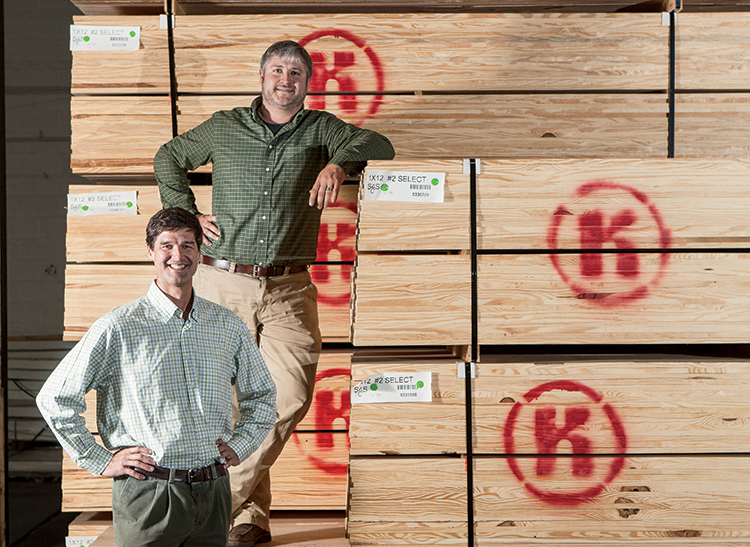Home > Alabama > Alabama Crops & Livestock > Logging Growth
Logging Growth

Alabama landowners in 2014 grew timber at an average rate of 41 percent faster than it was cut.
As a result, market expansion for lumber ranks among the state’s economic development priorities, according to Ken Muehlenfeld, director of the Forest Products Development Center within the Alabama Department of Commerce.
“We are actively pursuing companies who would like to take advantage of that large resource base that is both renewable and has been expanding in recent years,” Muehlenfeld says. “We have a substantial amount of potential to expand lumber production for both domestic and export markets.”
Growing the Green
Alabama experienced nearly 24 percent growth in worldwide demand for lumber from 2012 to 2013, according to statistics compiled by the Alabama International Trade Center. More than half of the top 30 destinations for Alabama lumber logged greater than 10 percent in purchase increases, and China’s demand doubled.
During 2015, timber production throughout the South could return to the 2005 high and set a new record by 2017, predicts Lynn Michaelis, a consultant in the timber industry, who published an article on the subject.
Housing starts should increase with the improved job market. China’s demand for lumber will remain high for the next decade as it builds houses for its growing urban population. And the South sits better positioned to meet strong growth demand than other timber-producing regions in the next few years.
“Given current conditions in both the U.S. and overseas, the next 10 years could very well be the ‘decade of forestry,’” Michaelis writes.

Tapping the Potential
Klumb Lumber Co., a third-generation Alabama business, sells lumber to 76 countries, primarily in the Caribbean, according to Stewart O’Neill, division manager of Klumb Lumber International. The business also serves North Africa, Europe, China, India and more.
“We have been growing steadily over the last couple of years, even with more competition,” O’Neill says.
Alabama’s strong and established export market dates back to the beginning of the Alabama Port Authority in the 1920s, says Jimmy Lyons, the agency’s director and chief executive officer.
“Lumber has always been a very important commodity to this port since the beginning,” says Lyons.
The Port of Mobile ranks as the largest breakbulk port for forest products in the U.S., he says. About 2 million tons of forest products ship breakbulk, or non-containerized, from the port annually. About 220,000 tons of that is lumber, he says.
Another 120,000 tons of lumber annually ship in containers to worldwide destinations with growing demand from China, the No. 1 importer of Alabama lumber, Lyons says.
An ample supply of container ships has served this market to date, and the Alabama Port Authority stands ready to serve future demand for lumber.
“We’re working right now to get additional vessel line services to go to Asia,” Lyons says. “Hopefully, we will have that in place by 2016.”
Perks of Southern Yellow Pine
Southern Yellow Pine represented 68 percent of lumber exports in 2013, according to statistics compiled by the Alabama International Trade Center.
The lumber species remains competitive from both performance and cost standpoints.
“Southern Yellow Pine is readily available, and it grows very fast relative to any other tree in the world,” O’Neill says. “It’s just a good fiber to work with in many applications, whether it’s strength or appearance.”
Southern Yellow Pine lumber from Alabama offers competitive mechanical properties and better nail-holding and screw-holding capacities than some competitor lumber species, Muehlenfeld says. It treats well with preservatives for outdoor applications. And the species thrives in Alabama’s soils and climate.
The state’s growers produce quality Southern Yellow Pine sawtimber in about 30 years, half the time of competing lumber species in other parts of North America, he says. This provides a higher return on investment and expanded market opportunities for Alabama lumber.




![Alabama Logging [INFOGRAPHIC]](https://eadn-wc01-4177395.nxedge.io/wp-content/uploads/2020/05/Screen-Shot-2015-02-16-at-4.12.30-PM1.png)